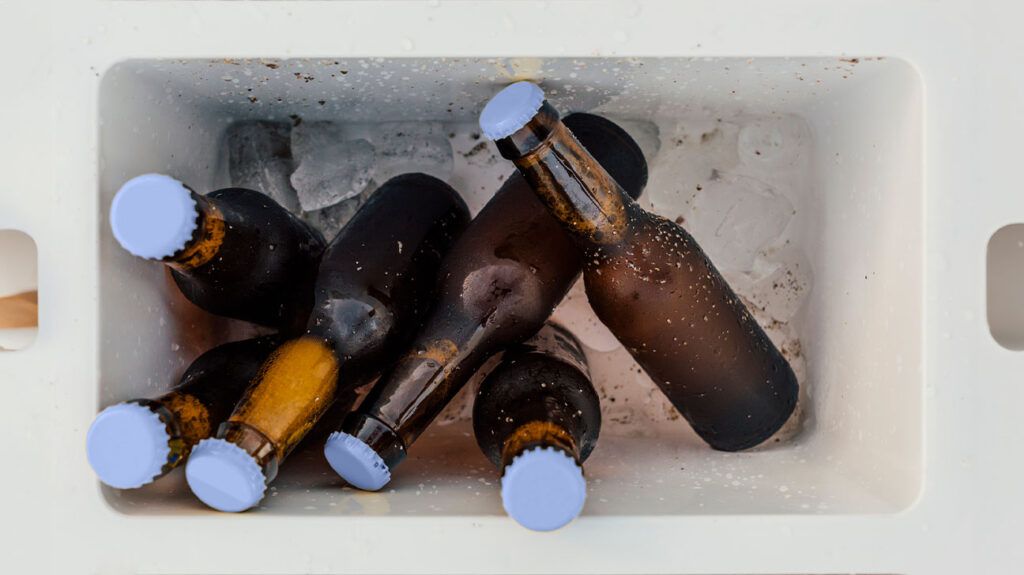
- Researchers say binge drinking combined with genetic risk can dramatically raise the risk of developing alcohol-related cirrhosis.
- They add that having type 2 diabetes puts people who binge drink at even greater risk.
- Experts say the study findings could help identify people who need targeted interventions to prevent liver disease.
Alcohol-related cirrhosis of the liver is often thought of as a disease related to chronic alcohol misuse, but new research is reporting that this deadly liver illness may also be triggered by binge drinking.
Researchers said that people who binge drink and also have a genetic makeup putting them at higher risk of alcohol-related cirrhosis may have a six-fold increased risk of developing the disease compared to study participants who reported drinking within daily limits and had low genetic predisposition to alcohol-related cirrhosis.
The researchers noted that this risk was even higher among binge drinkers who also had a diagnosis of type 2 diabetes.
Their findings were detailed in a
In cases where all three risk factors are present — binge drinking, genetic disposition, and the presence of type 2 diabetes — drinking patterns may play a more significant role in development of cirrhosis than the volume of drinking, according to the researchers from University College London, the Royal Free Hospital, the University of Oxford, and the University of Cambridge.
“Many studies that look into the relationship between liver disease and alcohol focus on the volume of alcohol consumed,” said Linda Ng Fat, a first study author and a senior research fellow at the University College London, in a press statement. “We took a different approach by focusing on the pattern of drinking and found that this was a better indicator of liver disease risk than volume alone. The other key finding was that the more risk factors involved, the higher the ‘excess risk’ due to the interaction of these factors.”
“This research is important because it reveals that it’s not just how much you drink overall but the way that you drink matters,” added Pamela Healy, chief executive officer of the British Liver Trust. “Drinking a lot, quickly, or drinking to get drunk, can have serious consequences for your liver health.”
Researchers said the each factor raised the risk of liver disease even when viewed in isolation.
For example, those who engaged in heavy binge drinking, categorized as having 12 units of alcohol in a day at some point during a given week, were three times as likely to develop alcohol-related cirrhosis.
The risk for those with a high genetic predisposition was four times higher and the risk for those with type 2 diabetics was two times higher.
Dr. Theodore Strange, the chair of the department of medicine at Staten Island University Hospital in New York who was not involved in the study, told Medical News Today that the research makes an interesting distinction between the health risks of binge drinking as opposed to the sheer quantity of alcohol consumed.
“This needs to be studied more as there may be something that genetically predisposes some people to have more serious liver injuries from binge drinking that may be due to just the shock of that amount of alcohol to be processed so quickly as opposed to more sustained amounts over time,” he said.
Strange said the “shock of binging could possibly overwhelm the liver’s ability to metabolize alcohol” and may “acutely affect the ability of the cells of the liver to survive because of acute damage, which they may be genetically prone to.”
“Binge drinking puts immense strain on the liver, which is responsible for metabolizing alcohol,” Adam Zagha, the founder of Numa Recovery Centers and a certified mental health and addiction treatment who was not involved in the study, told Medical News Today. “When alcohol is consumed in excessive amounts, the liver is unable to keep up with the detoxification process, leading to the accumulation of toxins and the development of liver cirrhosis over time.”
The
For men, that usually means consuming five or more drinks within two hours. For women, the same BAC is typically reached by consuming four or more drinks in the same time period.
Researchers said that liver disease is among the leading causes of premature death globally with an estimated 2% to 3% of the world’s population having cirrhosis (scarring of the liver) or liver disease.
“It is crucial for individuals with a family history of liver disease or those with a genetic predisposition to alcoholism to be aware of the increased risk they face,” said Zagha. “This knowledge can empower individuals to make informed decisions about their alcohol consumption and seek help before irreversible liver damage occurs.”
Dr. Steven Bell, a senior author of the study and a senior research associate at the University of Cambridge, noted in the press statement that liver disease, and particularly alcohol-related fatalities, has surged since the onset of the COVID-19 pandemic.
“This study equips us with novel tools that are essential in pinpointing individuals at highest risk, thereby enabling us to direct interventions more effectively toward those who stand to benefit the most,” he said.
